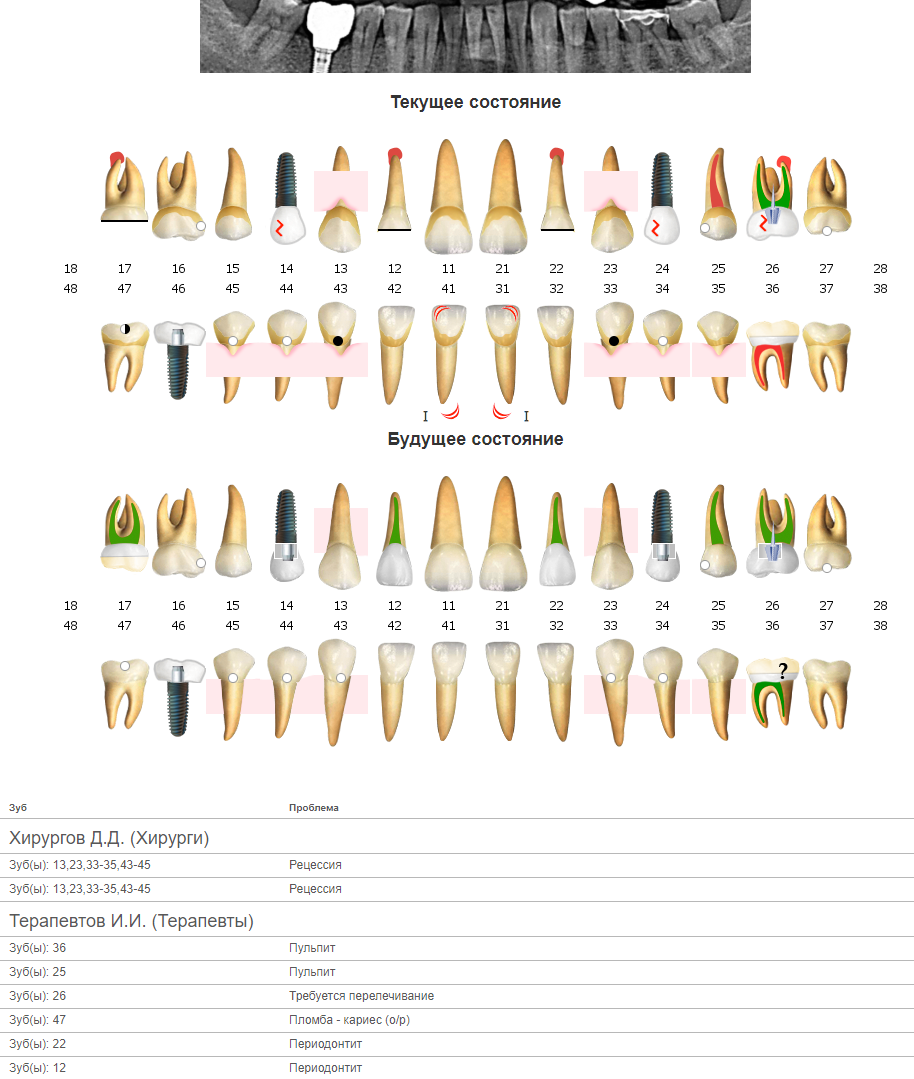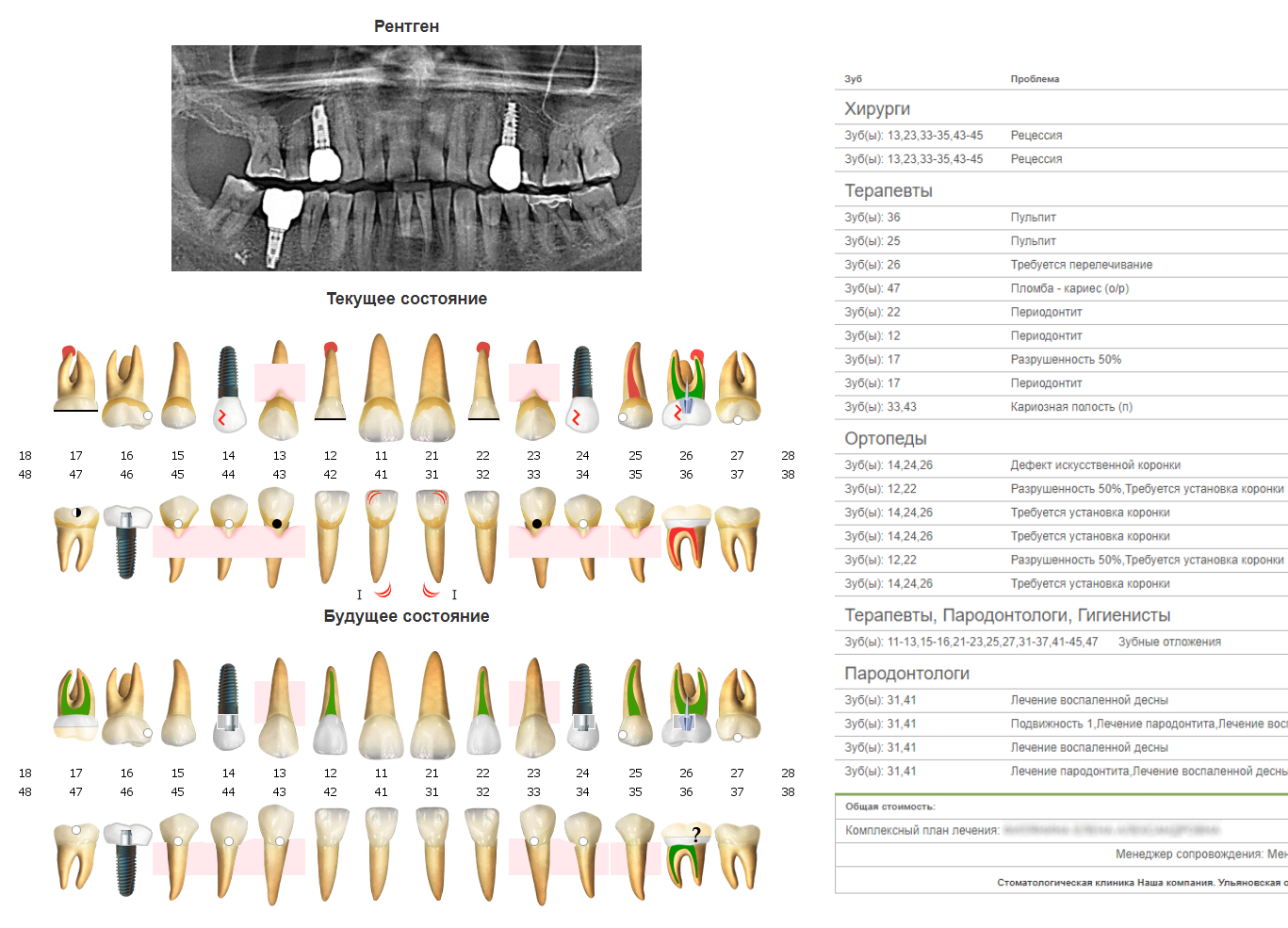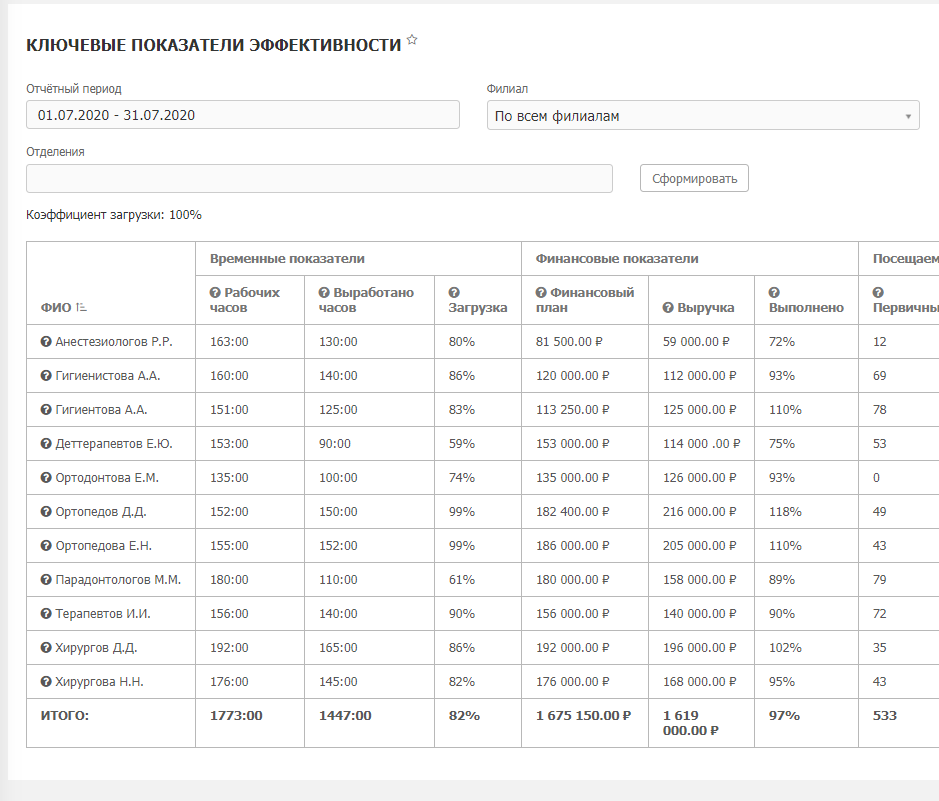
The dental treatment process in most clinics looks like this:
- The patient deals with a problem: a toothache.
- An examination is appointed, during which they check all possible problems in general, a panoramic scan is done.
- The doctor eliminates the problem and proposes a treatment plan that implies full rehabilitation - prevention of the following problems and healthy beautiful teeth (or implants) for the future.
- The doctor explains the treatment plan to the patient and tries to persuade him that teeth should actually be dealt with.
- — , , , . , , .
- «» , (- ) .
The patient's final condition is either he becomes covered with zirconium from ear to ear, forgets about dentistry for five to seven years, or he still needs to come for oral hygiene (removing plaque) about once every six months. That is, the patient either disappeared, or he is scheduled for the next visit, albeit in five years.
How complete this process will take place, how much the patient is rehabilitated, and how much the clinic will earn on this depends on the work of everyone at once. But the work of the administrator and the automation of processes can greatly increase the efficiency of the clinic. Let's take a closer look at this.

Four levels of administrator evolution
1. "Many-armed Shiva"
This is when there is only one administrator in the clinic, and he does everything. And he brings cards, and prepares patients, and monitors the archive, and works at the checkout, and takes calls, and makes tea to waiting patients, and sees off, and meets, and answers questions. Usually it looks normal in the clinic up to three chairs (and nothing else is needed), but then it starts to create problems. Because it is simply impossible to do everything efficiently. The first conflict occurs at the moment when the administrator speaks on the phone with the patient, and someone enters the clinic. And you either need to hang up (but you can't), or the visitor will consider that they are not paying attention to him. The terrible begins at rush hour, when both the call and two or three patients are waiting for an appointment, and someone still needs to be calculated.
As a result, the administrator begins to select priorities. Calls suffer at first: with living patients in the clinic, they simply do not pick up the phone. And each call is a person who could bring you 30-300 thousand. If you answer. And if you didn't answer, you might not have brought it.
Secondly, the documents suffer. In the mind of the administrator, they are divided into two types: super-obligatory and not so. For some reason, the title page of the card is considered extremely obligatory everywhere in Russia (so that doctors do not swear that the patient is Bezmeni-1). Informed consent and contract, however, often fall into the less binding. The patient can enter without a contract and consent. The clinic remains completely without protection, and the patient may simply not pay for the admission and will be legally right. By the way, if you were admitted without your consent, you may not pay for admission. This is called "consumer extremism", but in medicine it is understandable and justified: if you allowed to inflict injuries on you (for example, to pull out a tooth), this is medical assistance. And if they didn’t allow it, it’s actually an everyday crime.
In the intervals between registrations, the administrator calls outgoing calls. It ends with the fact that at 19:00 there is still to ring the patients for tomorrow (a damn important operation that will increase the workload and the ability to take new emergency patients), but it's time to go home. And commercially significant things are not done because they do not burn or scream in pain.
2. Primary specialization
Around the fourth seat, it becomes clear that one administrator cannot cope. A second vacancy appears and division of duties begins. If one girl stands at the reception and takes offline, and the second sits in the back (not right at the edge of the counter) and talks on the phone, then the patients calm down. In the case of one person, a 50/50 split will not work. The patients are angry. And with two, although the situation is mathematically the same, everything is perceived well. There are no more scary situations when you have a regular client in front of you, and the patient asks the hundredth question on the phone. Or when you can't put the phone down, and the patient wants to go to the doctor for removal, but cannot, because he needs to pay first.
The specializations are as follows: one role is more patient support and payment, the second role is the rest. Both admins can do the same thing, and can easily switch roles throughout the day.
Two receptionists at the counter means four people on the staff, since the usual schedule is two in two.
3. Allocation of the call center and registry into separate divisions
On 12-13 seats, it becomes clear that only one flow of patients is such that it is necessary to share the roles completely. Or you want to remove the functions of a call center from several clinics and combine them somewhere in one place. A dedicated call center appears (usually in the central clinic of the holding or remotely). Registries appear in each specific branch. The call center works with both incoming and outgoing calls - for this you already need to automate the exchange of tasks (that is, in fact, by importing the following techniques from cards) with clinics.
Registries never call anyone except when they are late for a specific appointment right now. Some administrators accompany VIP clients, but there are no dedicated treatment coordinator roles yet.
Such a set of actions gives one more important thing: if the registration of an appointment went past the system, then it is clear that someone steals in the clinic or does not work according to standards. In the case of multiple clinics, this is especially important for the control of owner managers.

4. Complete differentiation
This is the way of premium clinics or very large centers. A welcome team appears (cashier administrators) who greet patients and give them documents. Individual treatment coordinators appear (they accompany their patients, for example, meet “their” patients, negotiate with them a treatment plan, and so on).
This increases the service, but increases the burden on the payroll. On the other hand, it also increases the LTV of the dental client, so it always pays off in the premium class.
The fourth stage is also good because when the doctor leaves the clinic, patients are not lost. The administrator was the contact person, all treatment plans and statuses of procedures are managed by him, he negotiated - and the patient eventually calls him and not the doctor. Treatment coordinators generally separate doctors from patients completely in terms of negotiation - in particular, price negotiations.
Graduation by technology level
Initial level of clinic organization:
- Telephony is analog.
- Recording data in notebooks and journals.
- Manual dialing.
- The call is not recorded.
- The result of the call is recorded on paper.
- The fact and time of arrival (late / not) is not recorded.
- The beginning of admission is not recorded.
- Only paper documentation.
- The cost of treatment is formed from the doctor's head and transferred to payment on leaflets.
- The duration of the appointment is not recorded.
- After the appointment, the patient is not called.
:
- .
- .
- .
- .
- , .
- ( ) .
- .
- .
- .
- .
():
- -.
- .
- .
- .
- .
- .
- .
- Planning future visits based on diagnostic results.
- Transfer of information for calling the call center.
- Filling in the card electronically.
- Future visits are predetermined in terms of duration and cost.
- A clear, comprehensive treatment plan is handed out to the patient.
- Payment is made through the online checkout.
- Fixation of the end of treatment.
- Calling on behalf of a caring doctor after each visit.
Naturally, we first developed our clinic to the last stages, checked everything on ourselves - and then we chose not the path of developing the holding and the branch network, but the development of software in order to introduce this automation. Examples are in our other posts .
More aspects of the administrator's work
The administrator in a regular clinic does not discuss the treatment plan with the patient. Because he doesn't understand anything about it. But the coordinator of the treatment - he discusses, and this is an important part of his job. He motivates, fights against fears, objections. And often his point of view is an everyday level, not a medical one. The doctor can tell you what the risks are and why a particular type of intervention is chosen. The administrator can show reference photos of people with straight teeth. The doctor may say, "The pain will be 6 out of 10 in 90% of cases." The administrator can say: “Crunch, and it doesn't hurt. Then in the evening it will start to hurt, but we prescribe painkillers. The next day will be unpleasant, but this is only one day, but then ... "
In most clinics, administrators are not involved in agreeing a plan and implementation precisely because there is a gap between the knowledge of the doctor and the administrator. The doctor knows what to treat and what hurts. The administrator knows what the doctor has written down and does not discuss. I wrote it down to the morgue, which means to the morgue. We remove this barrier through automation. The treatment plan - a flowchart in the form of a formula and a layout of actions for each tooth - makes the interpretation of data easy to learn.

We ran an experiment by showing panoramic images of teeth (which are the main source of information for doctors) to administrators. Nine out of ten cannot distinguish contrasting elements from caries. Even those who have been working in the clinic for years.
Does the patient start bargaining for the plan? Sure. But here the approach of the clinic is important: you can choose between plans 1, 2 and 3, but do not throw out the parts in the spirit of: “But here, let's not isolate the canal, because it reduces risks from 5% to 1%, but it is very expensive , I will tolerate, if anything. " Yes, the administrator in CRM can remove some item, but for this you need to register detailed justifications. A protocol is a protocol, and if it is customary in a clinic to isolate a channel, then everyone does it.
Another feature of the clinics in the branch network is staff lateness., in particular administrators and assistants. If the doctor usually comes on time (because the patient will immediately make a scandal), then the support staff should prepare the chairs in advance. And they are late. As a result, the first half hour of the clinic's work runs with low efficiency. We've added a simple slider to CRM - like a patient - just for everyone on staff. Now, before leaving the shift, you need to pick it up at the ACS or at the reception. And the time of arrival and departure is understandable. It's overtime tracking. The system adds up the time and compares it with the schedule: it is clear what to pay for.

Very often, a lot of questions arise when patients call. Regular programs issue tasks every six months to call, invite for a professional examination. Calls after operations usually pass conceptually with the surgeon, they say, girls, Ivanov and Petrov, dial tomorrow, teeth here they are, do they miss them, is everything okay. Of course, they don't put their teeth on the monitor for a reminder, but the principle is similar. But in ordinary everyday situations - I finished with one doctor, I was rewritten to another doctor (often an orthodontist), and the patient went on a business trip - the patient is lost. That is, the first doctor believes that he has prepared everything for implantation, and the orthodontist does not even know about the patient yet. The administrator dialed, but did not get through. And no one reminded the patient anything. In the documents - he asked to write out - he was discharged, asked when he would come for implantation, - did not answer. Ready lost.Having a comprehensive plan and a coordinator will allow you to track such situations. If this is not the case, you can just look at all unclosed plans. Which, by the way, should be done right today if your administrator is idle for at least an hour. The patient is in three states: a) we know when to call back, b) made an appointment, c) refused to cooperate. There are simply no losses.
The built-in problem book for unformalized things also turned out to be convenient in CRM . There is a todo list for the day. For a single administrator, all non-routine tasks. The rest of the tasks are usually divided into tabs: archiving work, working with documents, regular ringing, ringing with care (how is it after the operation, does the seal overstate), scheduled ringing, birthday greetings for VIP clients. Each tab has priority: something is postponed, but something is not allowed. Something is more expensive for the clinic, and something is cheaper. All completed unfulfilled ones are red and create a download when the administrator is between rounds.

The manager can see these “done and not” lists throughout the day. Alerts are set up that the administrator is doing something too slowly - this is a reason to either call someone else on the shift or immediately think over priorities. Or negotiate overtime.
For regional clinics, the function of replacing calls from a problem book with SMS turned out to be very useful.That is, the same reminders, if everything is completely tough and you do not have time, can be replaced by sending SMS for open tasks. And it is also very convenient to record the results of a call like a record in the form of SMS. Once our SMS center crashed, and we learned that this greatly affects the conversion. Especially when patients are used to being reminded. After that, the standard functionality of SMS was included not only as a replacement for a call and fixing after it, but also as an independent step that does not exclude a call. Most of the SMS is sent automatically: for example, if an appointment is made by call, then the patient is immediately scheduled by default four SMS: immediately with the date and time, one day, two or three hours before the appointment and after the appointment with a question whether everything is fine.
Here is an example of a patient admission at StomPRO, and heremore about the treatment plan. At StomPRO we followed the needs of the clinic, and the history of our clinic, where you could see all the delights of automation clearly, is here .